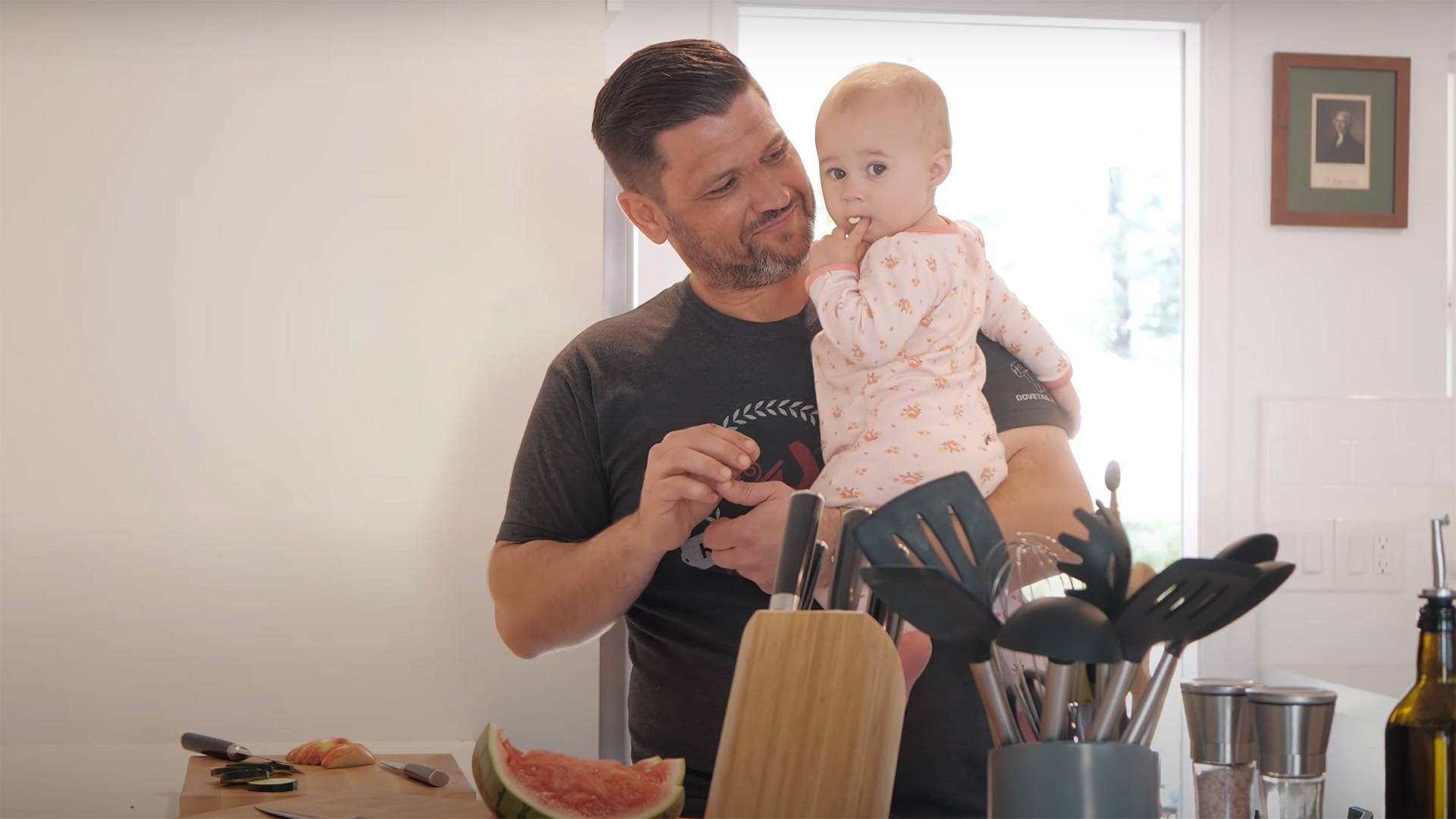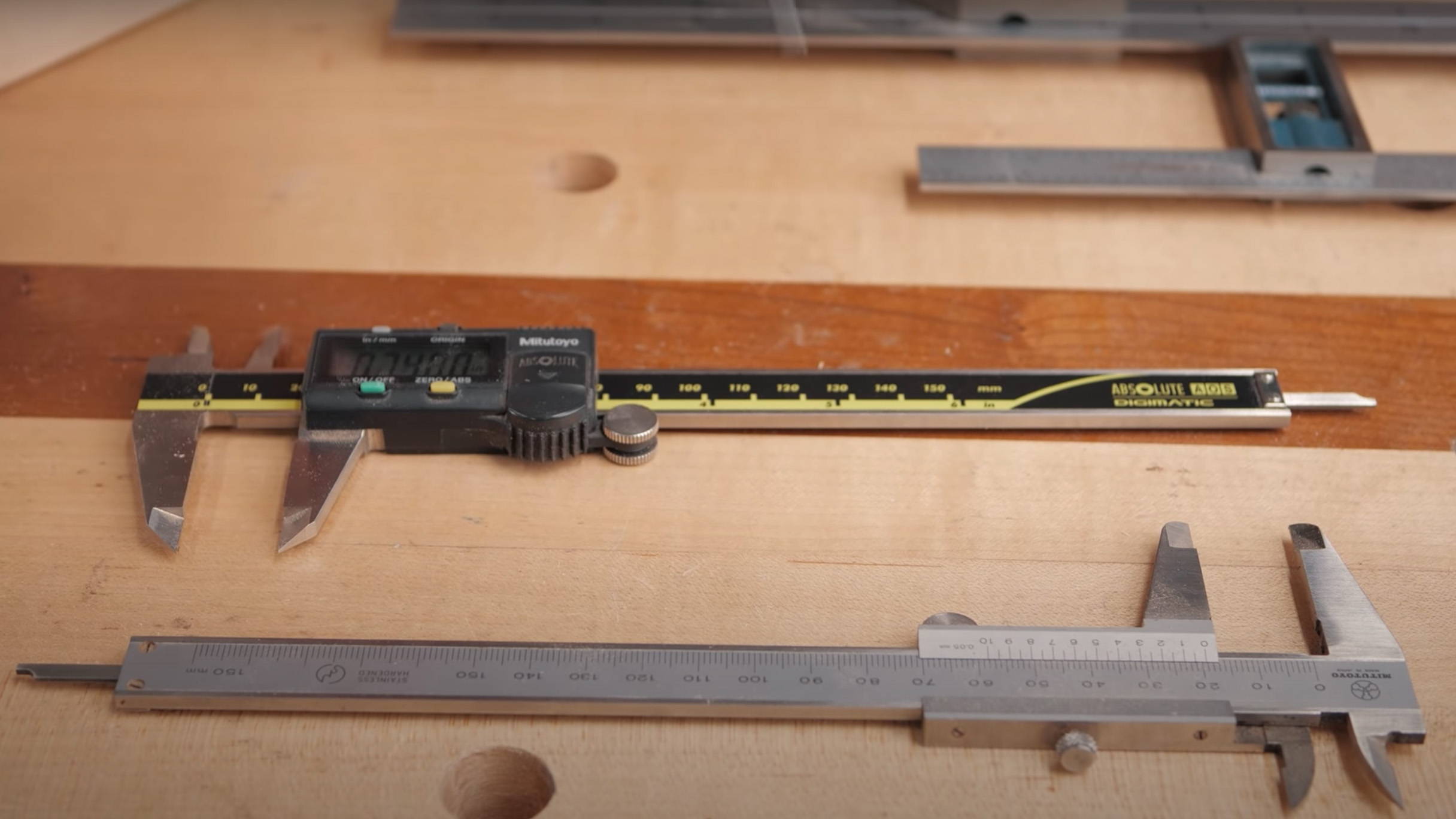Want your finishes to feel as smooth as a piece of glass? Grab a Scotch-Brite pad.
After your last coat of finish has dried, buff the entire surface with one of these abrasive pads.
The ultra fine grade aluminum oxide abrasive quickly creates a polished surface that’ll have you running your fingers over your finishes with delight.
Unlike steel wool, these pads won’t splinter, shred, or rust — meaning they can last for ages and won’t mess up your finish.
I like to use them as the final step in Rubio Monocoat finishes, or even between coats if you do more than one.
More of a shellac aficcionado? Put a bit of paste wax on a Scotch-Brite pad and buff out the entire surface after your final coat.
You’ll be amazed at how much smoother and glass-like your finishes will become.
What’s your secret for ultra smooth finishes? Let us know in the comments below!
Follow us on Instagram @katzmosestools, on TikTok @katzmoseswoodworking, and check out my YouTube channel for more great woodworking content...
And as always, STAY SAFE IN THE SHOP!











9 comments
Thomas
When I hear “Scotch-Brite pads”, I’m thinking of the green ones I use to wash the dishes. I’ve never seen these maroon ones. Is there a difference in the results? I would hate to try this with the green ones I have on hand and find out the hard way that I’ve just scratched the **** out of my finish
When I hear “Scotch-Brite pads”, I’m thinking of the green ones I use to wash the dishes. I’ve never seen these maroon ones. Is there a difference in the results? I would hate to try this with the green ones I have on hand and find out the hard way that I’ve just scratched the **** out of my finish
Balad Tebo
Is there a major difference between the 7447 and 7447 Pro? I gently passed a 7447 over a finished piece and it left scratches….
Anyone’s help is greatly appreciated!
Balad
Is there a major difference between the 7447 and 7447 Pro? I gently passed a 7447 over a finished piece and it left scratches….
Anyone’s help is greatly appreciated!
Balad
Greg
I sand to 240-320 grit then use light grey scotch brite in between 3 coats of shellac cut 1:2. Then I spray 3 coats of Target coatings and sand in-between coats with white scotch brite. It looks awesome if I say so myself
I sand to 240-320 grit then use light grey scotch brite in between 3 coats of shellac cut 1:2. Then I spray 3 coats of Target coatings and sand in-between coats with white scotch brite. It looks awesome if I say so myself
Ken K
SCOTCH-BRITE GRIT CHART EQUIVALENTS
The value inside the parentheses is directly from 3M. The value outside the parentheses is from an online post by “Charlest” and is his opinion of what the grit feels like in use.
3M Scotch-Brite Nylon Pads:
7445 – White pad, called Light Duty Cleansing – (1000) 1200-1500 grit
7448 – Light Grey, called Ultra Fine Hand – (600-800) 800 grit.
6448 – Green, called Light Duty Hand Pad – (600) 600 grit
7447 – Maroon pad, called General Purpose Hand or Very Fine Hand – (320-400) 320 grit
6444 – Brown pad, called Extra Duty Hand – (280-320) 240 grit
7446 – Dark Grey pad, called Blending Pad (180-220) 150 grit
7440 – Tan pad, called Heavy Duty Hand Pad – (120-150) 60(?)
Green Scotch Brite is available EVERYWHERE, including kitchen sponges. It’s 600 grit.
Blue Scotch-Brite, available everywhere including “non-scratch” kitchen sponges, is casually considered by 3M to be about 1000 grit. But its ‘grit’ / abrasive is plastic PVC chips, so it won’t cut into hard or even semi-hard materials, so the “1000” approximation doesn’t actually mean much in the woodworking or metalworking world.
SCOTCH-BRITE GRIT CHART EQUIVALENTS
The value inside the parentheses is directly from 3M. The value outside the parentheses is from an online post by “Charlest” and is his opinion of what the grit feels like in use.
3M Scotch-Brite Nylon Pads:
7445 – White pad, called Light Duty Cleansing – (1000) 1200-1500 grit
7448 – Light Grey, called Ultra Fine Hand – (600-800) 800 grit.
6448 – Green, called Light Duty Hand Pad – (600) 600 grit
7447 – Maroon pad, called General Purpose Hand or Very Fine Hand – (320-400) 320 grit
6444 – Brown pad, called Extra Duty Hand – (280-320) 240 grit
7446 – Dark Grey pad, called Blending Pad (180-220) 150 grit
7440 – Tan pad, called Heavy Duty Hand Pad – (120-150) 60(?)
Green Scotch Brite is available EVERYWHERE, including kitchen sponges. It’s 600 grit.
Blue Scotch-Brite, available everywhere including “non-scratch” kitchen sponges, is casually considered by 3M to be about 1000 grit. But its ‘grit’ / abrasive is plastic PVC chips, so it won’t cut into hard or even semi-hard materials, so the “1000” approximation doesn’t actually mean much in the woodworking or metalworking world.
Ali
Any different thoughts if finishing a table with sealer and varnish? I’m about to build a dining table and use Target Coatings sanding sealer and conversion varnish. Thanks!!
Any different thoughts if finishing a table with sealer and varnish? I’m about to build a dining table and use Target Coatings sanding sealer and conversion varnish. Thanks!!
Mark C.
I love you , man. Your tip on the ultra finish using Scotch-brute pads was a solid tip and really helped me put my cutting boards over the top! Thank you, thank you for being that ace up my sleeve.
I love you , man. Your tip on the ultra finish using Scotch-brute pads was a solid tip and really helped me put my cutting boards over the top! Thank you, thank you for being that ace up my sleeve.
BBM
Why maroon instead of one of the white pads?
Why maroon instead of one of the white pads?
Rich
Instead of a Scotch Brite pad I use a small folded piece of brown paper from the heavy weight shopping bags to rub out finish between coats and the final coat. Removes all the nibs without dulling the finish.
Instead of a Scotch Brite pad I use a small folded piece of brown paper from the heavy weight shopping bags to rub out finish between coats and the final coat. Removes all the nibs without dulling the finish.
George
I do a fair bit of glueing up for cutting boards and often I cut thin strips (.05-
.06 thousandths of an inch. With out using calipers it would be difficult to cut them correctly and consistently. Thanks for your talk about using them!
I do a fair bit of glueing up for cutting boards and often I cut thin strips (.05-
.06 thousandths of an inch. With out using calipers it would be difficult to cut them correctly and consistently. Thanks for your talk about using them!